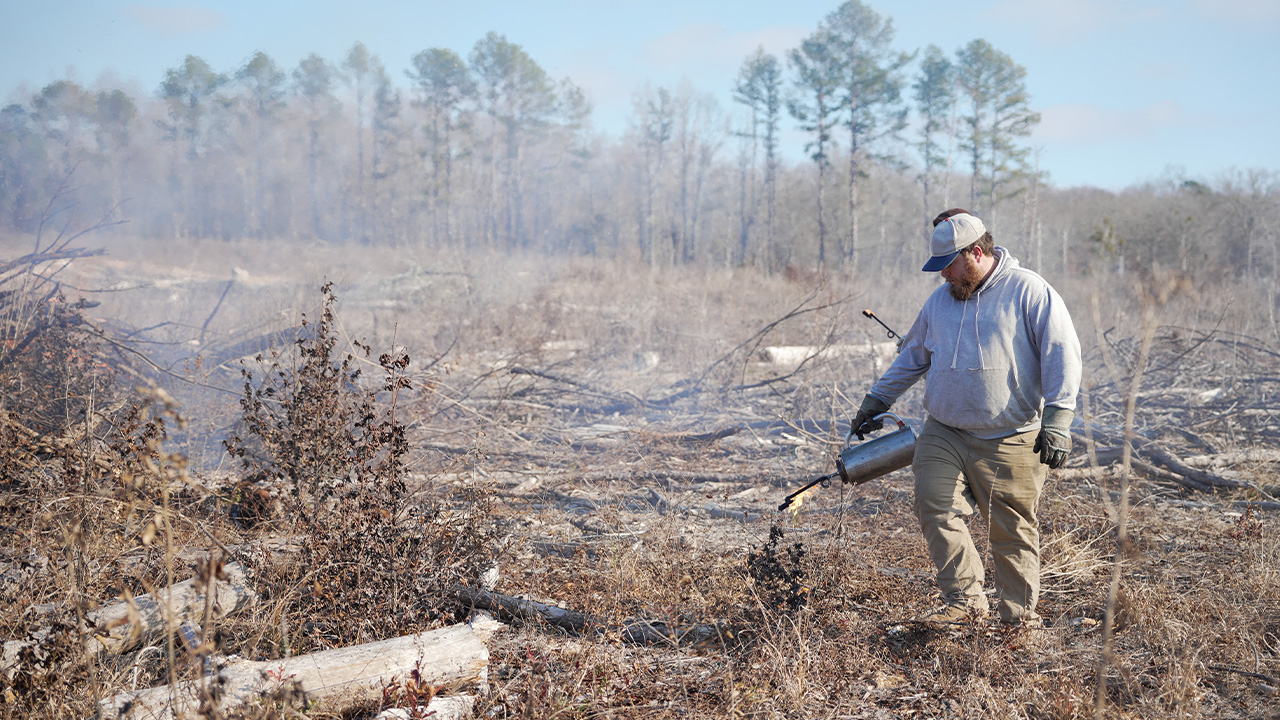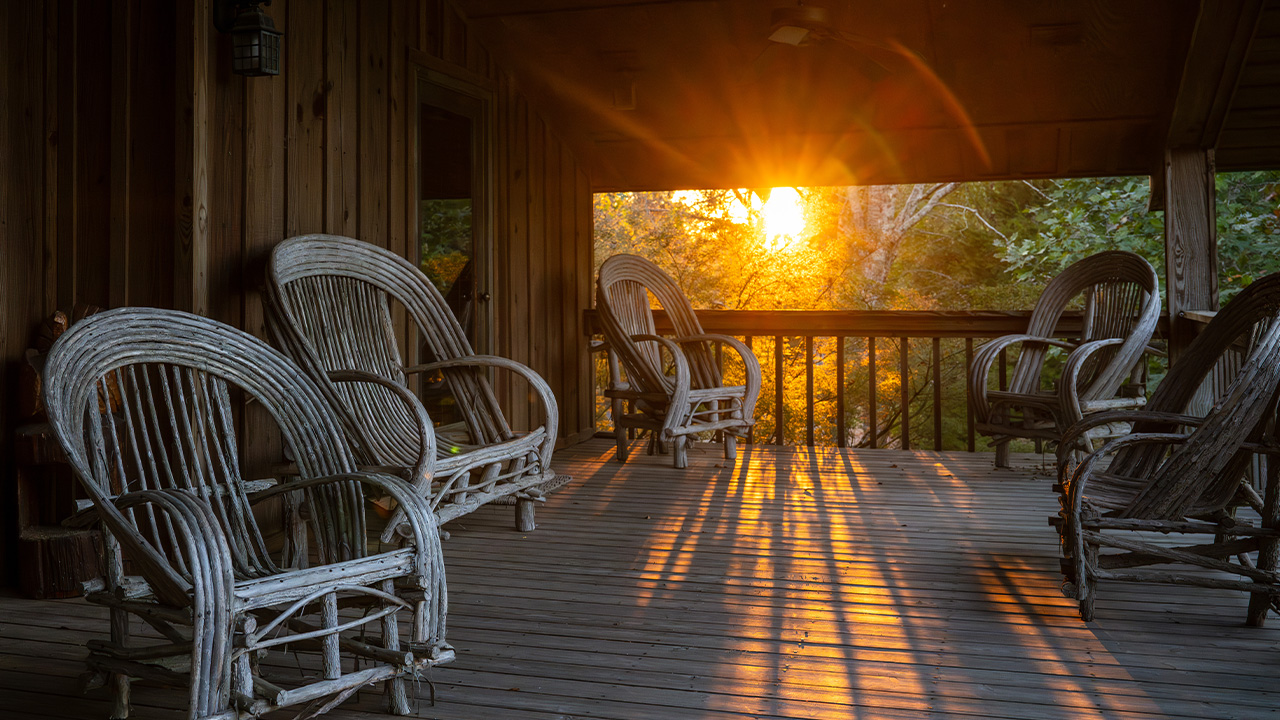content body
Like all the world’s forests, the 10,000 acres of wooded lands managed by Auburn University’s College of Forestry, Wildlife and Environment provide invaluable services: They generate income, ensure natural biodiversity and help purify water and air.
But as living laboratories and classrooms, those 10,000 acres spread across 27 sites throughout Alabama do even more.
As Preston Payne, the person responsible for managing these forestlands, explained, “These properties are important because they provide research and educational opportunities for professors, students and others.”
In addition to the value these forests provide to the Auburn community, researchers use these diverse sites to develop science-based solutions to challenges facing the forest industry and the environment. Forestry and wildlife professionals stay up to date on the latest best practices, landowners learn more about the best ways to manage their properties and Auburn students get hands-on experience that they’ll come to rely on as professionals and leaders.

Forestry Management Specialist Preston Payne manages 10,000 acres of university-owned wooded lands spread across 27 sites throughout Alabama.
Diverse lands for diverse goals
The diversity of Auburn’s forestlands mirrors the diversity of research, teaching and outreach opportunities they offer.
Many of the properties have been gifted to the university, and they vary widely in location, size and other characteristics, covering every geographic region of the state — from the foothills of the Appalachians to the Gulf Coast.
Those closest to campus, like the 400-acre Mary Olive Thomas Demonstration Forest, the 120-acre Kreher Preserve and Nature Center and the 11-acre Weagle Woods, are often used to provide CFWE students with opportunities for hands-on instruction.
So does the Solon Dixon Forestry Education Center (SDFEC), a 5,430-acre facility in Andalusia, and other outlying forests located on Alabama Agricultural Experiment Station land.
Nearly all of the experiment station’s 16 centers have forested areas that support a range of research — from studies on optimum prescribed fire intervals at the Gulf Coast Research and Extension Center, to experiments on preparing sites for forest replanting at the Fayette County Experiment and Demonstration Forest, to long-term, multidisciplinary research on white-tailed deer biology and behavior at the Piedmont Research Unit.
For scientists and graduate students planning research studies, Payne helps pinpoint suitable Auburn properties. Reese Stogner, for example, came to Payne six months ago looking for sites where he could determine if feeders designed to attract wild turkeys increase the presence of predators.
The two sat down, and after consulting Payne’s digital mapping tool, they decided on the North Auburn Forestry Unit and the Mary Olive Thomas (MOT) forest. The research is now underway, and Stogner expects that results, once in, will inform wild turkey management practices throughout the Southeast.
One among many who’ve benefited
Practices shaped by research taking place on Auburn properties are also used for teaching both professionals and students. That’s something Payne knows from personal experience.
As an undergraduate forestry major from 2016-21, he visited these forests often to receive the valuable hands-on instruction CFWE provides. Since joining Auburn’s staff in June 2024, he’s found himself drawing on what he learned during these visits every working day.
“In our forest measurements classes, we would cruise timber on some of these properties,” he recalled. Those experiences gave him firsthand experience estimating the volume and value of timber at a given site.
Today, Payne uses those skills as he works with Mark Stirling, Auburn’s director of real estate and property development, to create harvest management plans that are presented every five years to the university’s Board of Trustees.
“I have the utmost respect for Preston and his work,” said Stirling. “The services he provides are valuable, and his efforts help us make the right decisions in how we manage the university's land.”
Based on the standing timber inventory Payne provides, the pair identifies what timber will be harvested or thinned and how those lands will be replanted and managed for the future. They also include estimates of how much revenue the harvests will generate to support the university’s mission.
Other practical lessons
Payne also frequently relies on lessons he learned at the MOT forest.
“That's where I got exposed to prescribed fire, learning how to use that as a tool to manage the forest landscape,” Payne said.
In late February, Payne found himself back at the MOT, helping prepare the site for forest fire ecology students to practice what they’d learned from Research Fellow John Kush about managing prescribed burns to reduce wildfire risk, improve wildlife habitat and restore natural ecosystems.
“My team used a bulldozer to put in fire breaks, and we also made sure that this was a safe forest stand for them to conduct the burn demonstration,” Payne explained. “I was also there as they did the burn, riding around in a water truck and making sure that everything was going according to the burn plan, and the fire was under control.”
The value of proper land management
Perhaps because the sites where Payne works are so disparate and serve so many purposes, he finds that no two days are ever the same.
“It’s very broad — I could be doing prescribed fire one day and then cleaning restrooms at one of our properties the next day,” he said.
While Payne said that makes it hard to describe his job, two CFWE property managers were quick to attest to the value of his services.
Colleague N.L. Hart noted that Payne had just transplanted longleaf pines at Crooked Oaks, an Auburn-owned events destination she manages in Notasulga. He’s also conducted prescribed fires, cleared trails and identified trees that posed hazards.
Such tasks are critical, she said, primarily “for the overall health of the property. They keep guests safe and property structures intact.”
Meanwhile, Kreher Preserve and Nature Center Manager Michael Buckman reeled off a long list of Payne’s contributions — from conducting surveys and evaluating forest health to coordinating with partners such as the local fire department, Auburn’s Facilities Management and the Alabama Forestry Commission.
“We have 120 acres of forest that need to be managed in order for us to provide the high-quality environmental education and outreach services to the community that everyone knows and loves,” Buckman said.
Remarking on Payne’s character, Buckman cites the knowledge and work ethic he brings to his role as critical to the KPNC’s mission.
“Preston works hard to ensure our lands are effectively managed,” Buckman said. “He makes it possible for the KPNC to continue to offer a beautiful, healthy forest for the community to enjoy.”








